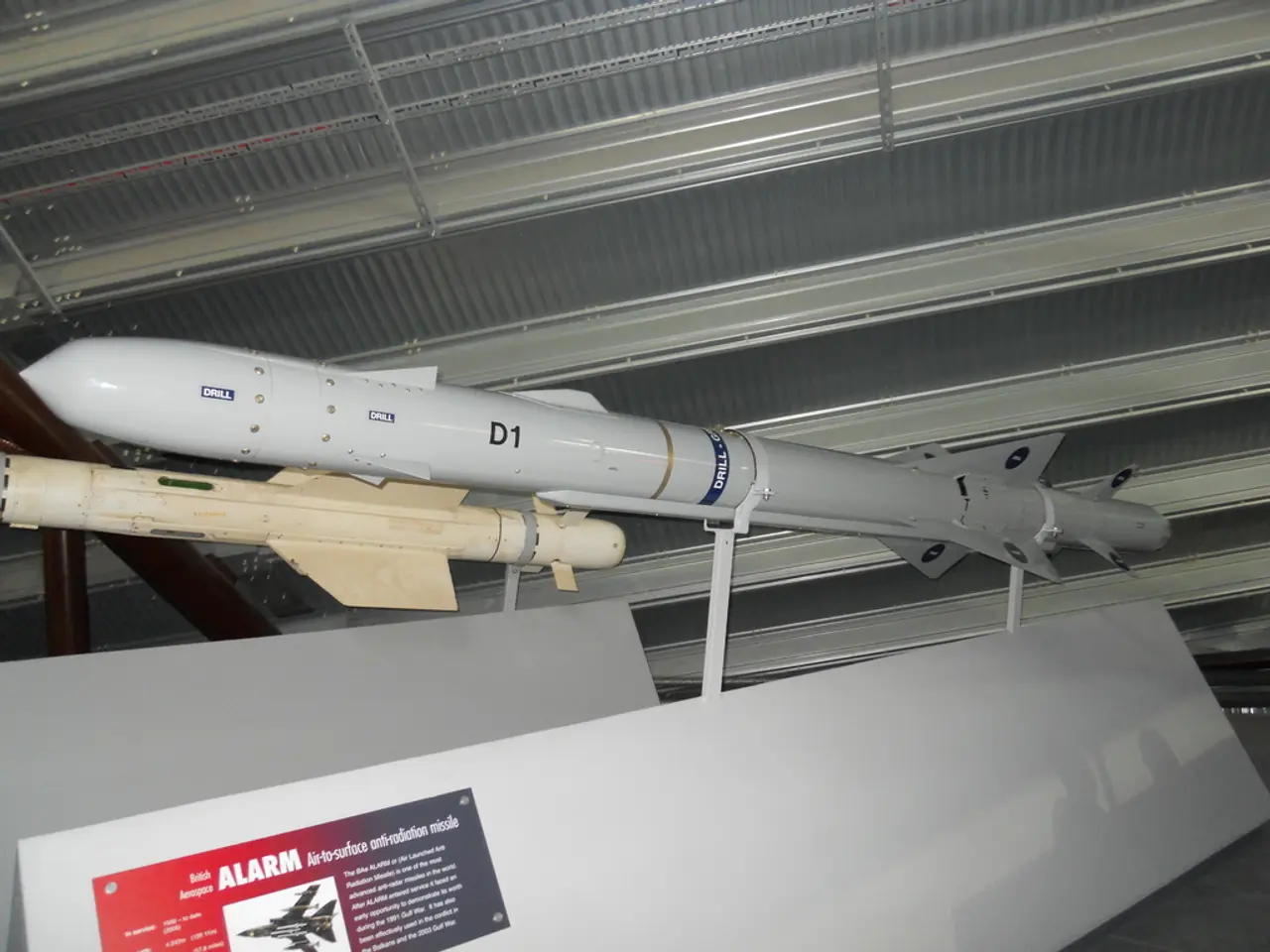United States Preparedness for Potential Nuclear Conflict with Russia, According to Trump
In a significant military move, US President Donald Trump has ordered the deployment of two nuclear submarines in response to perceived threats from Russia. The exact locations where the submarines will be stationed remain undisclosed.
This decision comes following a series of nuclear-related statements and actions that have escalated the tension between the two nations. In late July and early August 2025, Russian Security Council Deputy Chair Dmitry Medvedev issued nuclear threats towards the US, referencing Russia’s automatic or semi-automatic nuclear command system known as "Dead Hand" or "Perimeter."
Medvedev's remarks, which were considered a direct threat to US citizens by President Trump, prompted the US leader to take this precautionary measure. Trump hopes that Medvedev’s remarks will not lead "to unintended consequences."
Trump made his statement outside the White House while speaking to journalists, emphasizing the need for the US to be prepared to protect its citizens when there are threats of using nuclear weapons. He said, "We had to do that. We just have to be careful. And a threat was made and we didn’t think it was appropriate. So, I have to be very careful. So, I do that on the basis of safety for our people."
In response, Medvedev accused Trump of playing a game of ultimatums with Russia. Meanwhile, Kremlin officials downplayed the threat posed by the US submarine redeployment, characterizing Trump's actions as "emotional" and premature with regard to nuclear escalation, while portraying Russia as a more responsible nuclear actor.
The current status is one of mutual suspicion, heightened readiness, and an ongoing breakdown in arms control frameworks. Earlier this week, Trump stated that the US will begin imposing tariffs and resorting to other measures against Russia within 10 days unless Moscow demonstrates progress in ending the war in Ukraine.
Russia, in turn, announced the termination of its moratorium on deploying ground-launched intermediate-range missiles, signaling an escalation in its missile deployments and further straining arms control regimes such as the INF Treaty (already collapsed in 2019) and threatening the upcoming New START treaty expiration in 2026. This deployment increases the risks of sudden nuclear exchanges and places NATO territories within range of Russian missiles, heightening regional and global nuclear tensions.
Reports suggest that the Head of Ukraine's intelligence says Russians are preparing another assassination attempt on him, adding to the complex web of geopolitical tensions.
As both nations signal a willingness to maintain or expand nuclear postures amid deteriorating diplomatic relations and stalled peace talks regarding the Ukraine conflict, the world watches with bated breath, hoping for a peaceful resolution to this escalating standoff.
- The escalating nuclear-related statements and actions from Russia, such as those made by Dmitry Medvedev referencing Russia's "Dead Hand" system, have raised concerns about general news, including health and politics, as the perceived threats from war-and-conflicts like the one in Ukraine have led to higher nuclear tensions between the US and Russia.
- Trump's deployment of two nuclear submarines in response to perceived threats from Russia can be seen as a significant move not only in war-and-conflicts but also in politics, as it signals a willingness to maintain or expand nuclear postures amid deteriorating diplomatic relations, which have implications for global health, considering the potential risks of sudden nuclear exchanges.





